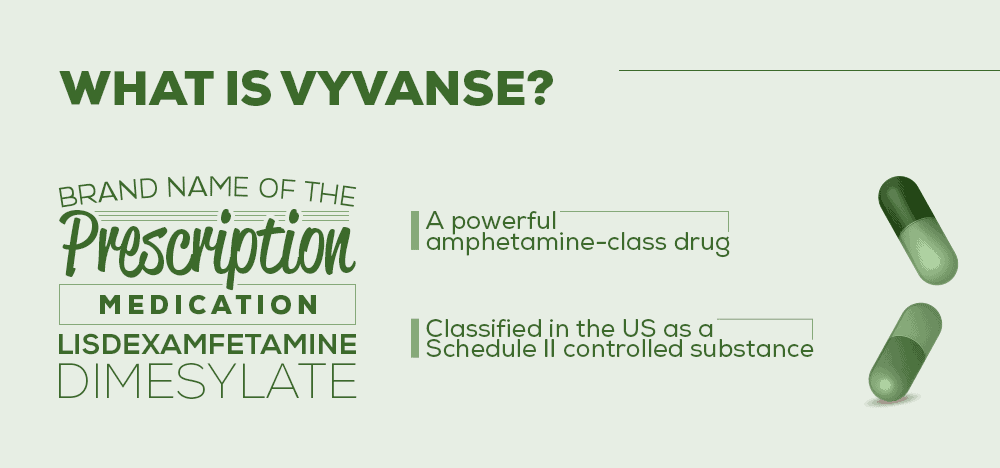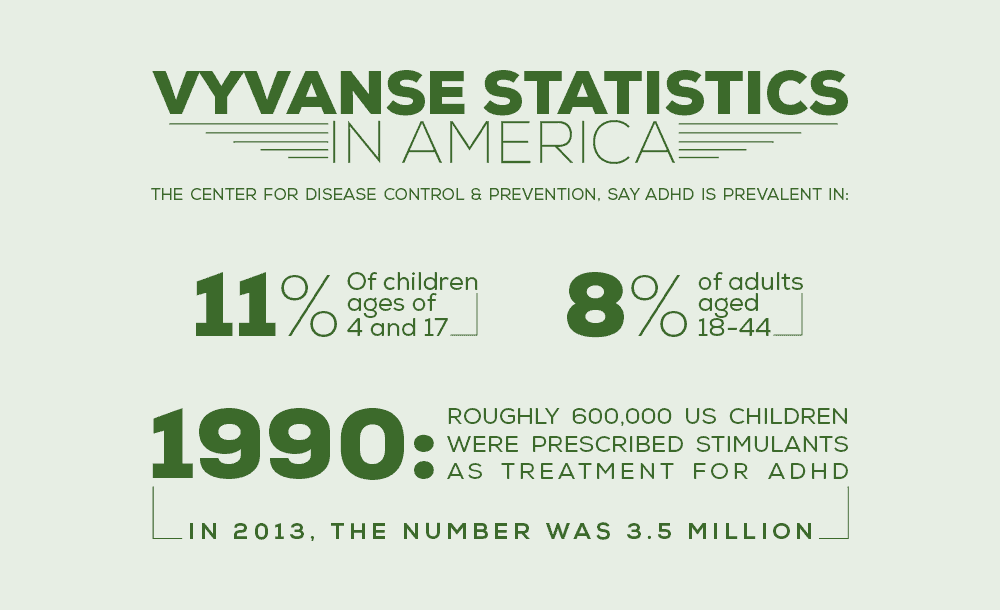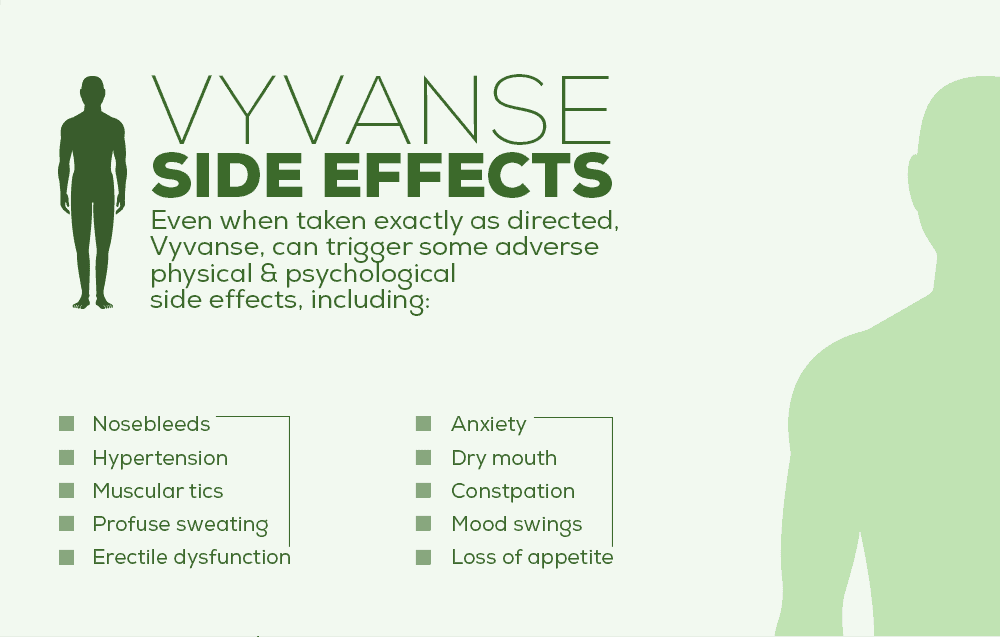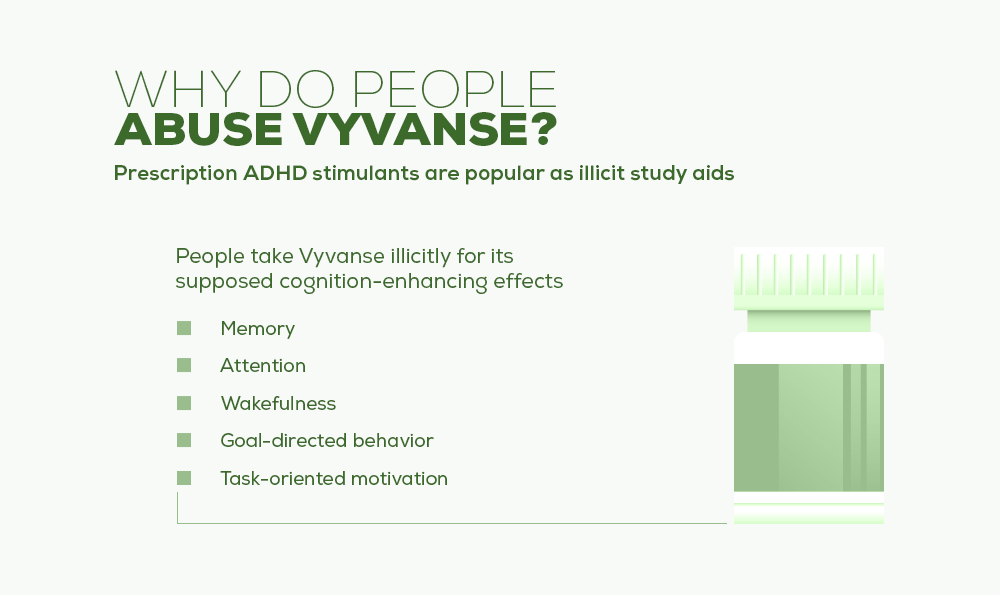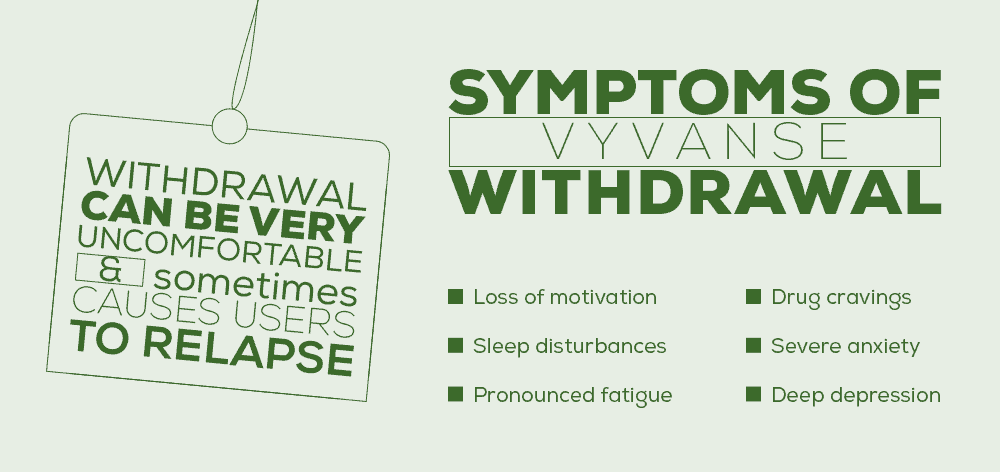While most people are familiar with ADHD prescription stimulants such as Adderall or Ritalin, fewer patients are knowledgeable about Vyvanse, another prescription-only amphetamine. While marketed as a safer alternative to other medications with a higher potential for abuse, there are still some significant concerns about Vyvanse that you should be aware of.
If you or someone you know struggles with Vyvanse, prescription drug abuse treatment at Northpoint Washington can help. Call 888.450.2153 to learn more.
What Is Vyvanse?
Vyvanse is the brand name of the prescription medication lisdexamfetamine dimesylate. Because it is a powerful amphetamine-class drug, it is classified in the United States as a Schedule II controlled substance. Vyvanse is typically prescribed for a number of conditions, including:
- Attention-deficit/hyperactivity disorder (ADHD)
- Binge eating disorders
- Asperger syndrome
- Chronic fatigue syndrome
- Depression
- Narcolepsy
- Oppositional defiant disorder

When taken for legitimate reasons and as directed, Vyvanse is a safe and effective medication. Not only does it reduce the core symptoms of ADHD—hyperactivity, impulsivity, inattention—it also improves several functional outcomes, including:
- Academic performance
- Antisocial behavior
- Driving
- Non-medical drug misuse
- Obesity
- Occupation/employment
- Self-esteem
- Social function
Although Vyvanse has legitimate medical uses, it is also diverted for recreational purposes and for supposed cognitive and athletic performance enhancement. The problem arises when Vyvanse is misused non-medically in a manner not recommended by the prescribing physician. In fact, it has become a common practice among people abusing Vyvanse to fake the symptoms of ADHD in order to obtain a fraudulent prescription.
Vyvanse Statistics in America
In 1990, roughly 600,000 U.S. children were prescribed stimulants as a treatment for their ADHD. However, a generation later, in 2013, the number of children being given prescription stimulants ballooned to 3.5 million. While far behind industry-leader Adderall, Vyvanse is growing in popularity. For example, in 2013, Vyvanse accounted for approximately $1.25 billion in sales for Shire, its parent company. But it is estimated that for 2017, it spiked to $2.1 billion.
Medications Similar to Vyvanse
Of course, Vyvanse draws comparisons with better-known ADHD medications like Adderall.
- Vyvanse is 100% pure d-amphetamine, while Adderall is composed of 4 d- and l-amphetamines. D-amphetamine is more effective at reducing hyperactivity and impulsiveness. L-amphetamine is better at improving concentration but may lead to increased anxiety.
- Adderall comes in both immediate-release and extended-release formulations, while Vyvanse is only available in a delayed-release formulation that is inactive until broken down by digestion.
- Whereas Adderall can be misused by crushing the tablets and then either snorting or injecting, this is not an option with Vyvanse.
Overall, Vyvanse is considered to have less abuse potential than Adderall. However, when chronically abused at higher-than-prescribed dosages, it is still possible to get high, and dependence and addiction become increasingly likely.
Vyvanse Dosages, Onset of Action, and Duration of Effects
Vyvanse comes in two different formulations—capsules or chewable tablets, and seven dosages—10 mg, 20 mg, 30 mg, 40 mg, 50 mg, 60 mg, and 70 mg. The chewable tablets, typically prescribed for children, do not come in the 70 mg dosage. Vyvanse is taken once a day, and the effects are felt within two hours. The duration of the effects can be between 12 and 14 hours.
Side Effects of Vyvanse
Even when taken exactly as directed, Vyvanse, as an amphetamine, can trigger a number of adverse physical and psychological side effects, including:
- High or low blood pressure
- Raynaud’s phenomenon – Decreased blood flow to the extremities
- Rapid heartbeat
- Muscular tics
- Profuse sweating
- Blurred vision
- Nosebleeds
- Excessive teeth-grinding
- Dry mouth
- Abdominal pain
- Loss of appetite
- Nausea/vomiting
- Weight loss
- Difficulty in urinating
- Constipation
- Anxiety
- Irritability
- Paranoia
People struggling with Vyvanse addiction may continue to use the drug even after experiencing severe side effects.
Vyvanse Dosages, Onset of Action, and Duration of Effects
Vyvanse comes in two different formulations – capsules or chewable tablets, and seven dosages – 10 mg, 20 mg, 30 mg, 40 mg, 50 mg, 60 mg, and 70 mg. The chewable tablets, typically prescribed for children, do not come in the 70 mg dosage. Vyvanse is taken once a day, and effects are felt within two hours. The duration of effects can be between 12 and 14 hours.
What Are the Side Effects of Vyvanse?
Even when taken exactly as directed, Vyvanse, as an amphetamine, can trigger a number of adverse physical and psychological side effects, including:
- High blood pressure
- Alternately, abnormally low blood pressure, leading to dizziness and fainting
- Raynaud’s phenomenon – decreased blood flow to the extremities
- Rapid heartbeat
- Reduced seizure threshold
- Muscular tics
- Erectile dysfunction
- Too-frequent/unwanted erections
- Priapism – prolonged, painful erections
- Profuse sweating
- Blurred vision
- Nasal congestion
- Nosebleeds
- Excessive teeth-grinding
- Dry mouth
- Faster and deeper breathing
- Abdominal pain
- Loss of appetite
- Nausea/vomiting
- Weight loss
- Difficulty in urinating
- Constipation
- Anxiety
- Grandiosity
- Mood swings
- Overactive libido
- Irritability
- Obsessive behavior
- Restlessness
- Delusions
- Paranoia
Why Do People Abuse Vyvanse?
Although the abuse potential for Vyvanse is less than that of other ADHD medications, it can still be abused or misused non-medically. At sufficiently high doses, Vyvanse can increase the user’s energy and create a euphoric feeling of well-being. All prescription ADHD stimulants are popular as illicit study aids. Misuse is highest among high school and college students, who take Vyvanse illicitly for its supposed cognition-enhancing effects like:
- Memory
- Attention
- Task-oriented motivation
- Wakefulness
- Goal-directed behavior

Vyvanse is also misused by athletes because it increases:
- Acceleration
- Muscle strength
- Reaction time
- Endurance
Use by athletes is especially risky, however, because amphetamines are banned by the anti-doping commissions of organized sports at every level. Also, at higher doses, they can impair athletic performance by elevating body temperature and accelerating muscle breakdown.
One of the biggest factors in the development of Vyvanse dependence and addiction is how rapidly a user can become amphetamine-tolerant. Needing higher doses to feel Vyvanse’s effects, the user soon becomes dependent on the drug and will experience painful withdrawal symptoms whenever it is not available.
Symptoms of Vyvanse Withdrawal
Almost 90% of chronic Vyvanse abusers will experience withdrawal symptoms within 24 hours of discontinuation. These symptoms can last up to four weeks, with the biggest “crash” occurring within the first week. While not particularly dangerous, Vyvanse withdrawal can be profoundly uncomfortable and may push the person back into resumed abuse. Some of the symptoms of Vyvanse withdrawal include:
- Severe anxiety
- Irresistible drug cravings
- Deep depression
- Loss of motivation
- Sleep disturbances
- Pronounced fatigue
If you or someone you know is struggling with Vyvanse abuse, it’s important to seek professional help right away.
Dangers of Vyvanse Overdose
As with any amphetamine, people who use Vyvanse can develop a tolerance, meaning the person has to take ever-increasing dosages in order to realize the same effects. Drug-tolerant users have been known to take up to 100 times the maximum recommended daily dose. A Vyvanse overdose is a medical emergency. Severe overdose symptoms include:
- Psychosis
- Delusions
- Bleeding in the brain
- Collapse of the circulatory system
- Insufficient blood flow from the heart
- Fluid in the lungs
- High blood pressure in the pulmonary arteries
- Kidney failure
- Carbon dioxide imbalance
- Abnormal blood potassium levels
- Dangerously high body temperature
- Muscle breakdown
- Seizures
- Coma
- Death
Vyvanse addiction treatment can drastically reduce the risks associated with overdose.
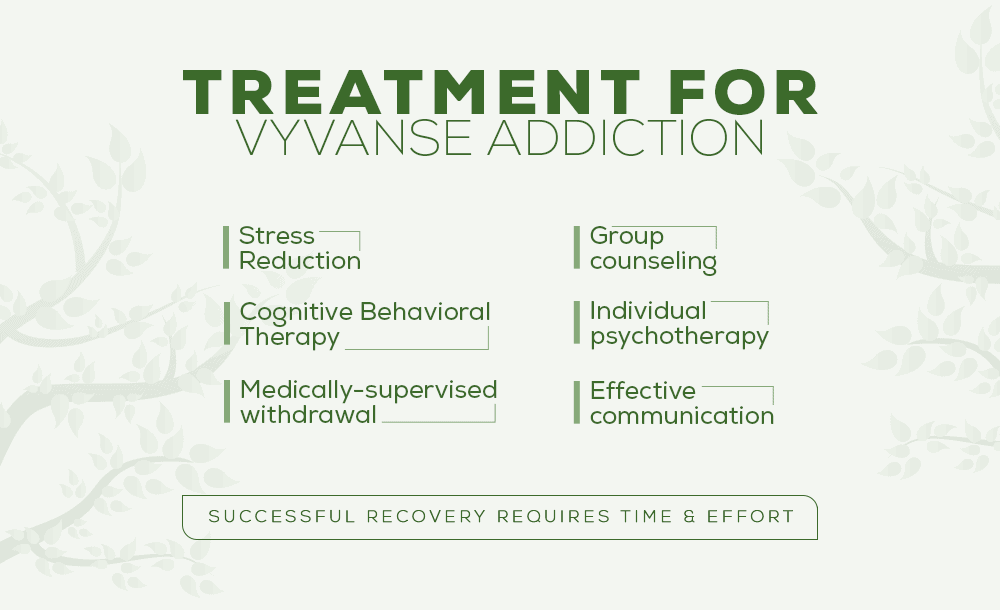 Prescription Drug Abuse Treatment at Northpoint Washington
Prescription Drug Abuse Treatment at Northpoint Washington
For other habit-forming substances, there are medications that can help ease cravings and alleviate withdrawal symptoms, but there are no such pharmacological options to support recovery from Vyvanse addiction. The lack of effective medication makes the other steps in the rehab process that much more important. Successful recovery will require time and effort as the addiction is addressed on multiple levels.
Northpoint Washington offers Vyvanse addiction treatment in Edmonds, WA. Our inpatient rehab programs are designed to provide a comprehensive treatment regimen that will address every aspect of addiction. Get started today by contacting us at 888.450.2153.
What Did you Think About This Blog?
Give it a Rating!

